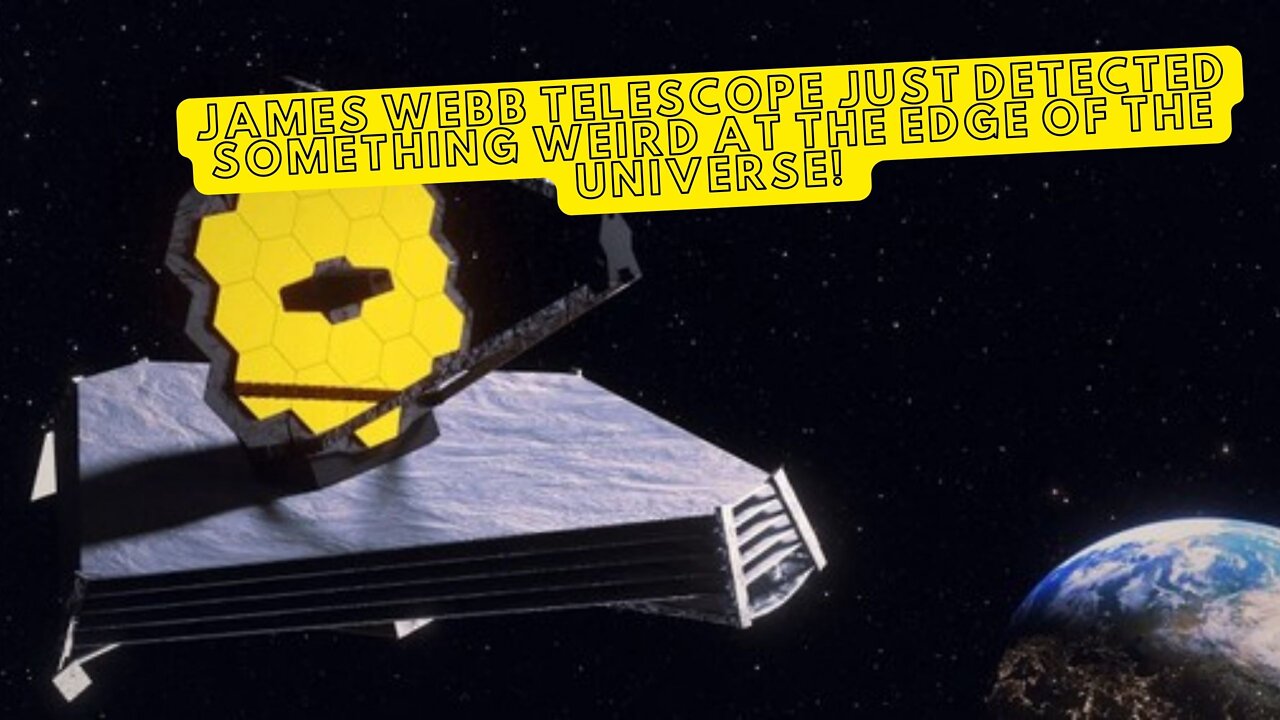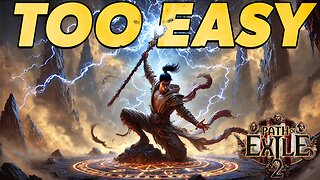Premium Only Content

JAMES WEEB Telescope Just Detected Something Weird At The Edge Of The Universe!
What do you do when you want to see something so far into space that you'll never be able to reach it? You send a space telescope into orbit. NASA has done just that by deploying the James Webb space telescope into outer space to enable us to see more of our cosmos.
The very edge of the universe will be one of the targets of the space telescope. The discoveries at the universe's edge promise to be terrifying. What will the first telescope observe at the universe's edge? How does it affect you? Join us as we investigate the startling discovery made by the James Web space telescope at the universe's edge that shakes everything.
Humans have long been intrigued by what lies underneath our feet, but as our research equipment becomes more advanced, our fascination has grown to include deep space. The invention of the telescope was critical in furthering our understanding of the cosmos; while the concepts of telescopes were known in the late 16th century, the first telescopes were not made until 1608 in the Netherlands.
The story of Galileo and his telescopic views demonstrates how powerful a tool for seeing and collecting information can be in changing our understanding of the universe. Early telescopes were largely used for making observations on Earth and assisting with activities such as surveying and military tactics, but Galileo Galilei became one of a small bunch of astronomers who aimed telescopes towards the heavens.
Galileo created his own telescope after learning about the Danish perspective glass in 1609, and the exhibition of the telescope secured him a lifetime lectureship at the university following his initial success. Galileo spent his time improving the instrument; his initial telescope could magnify objects three diameters, making them appear three times larger than they were; but, with further refinement of the design, Galileo built an instrument that could magnify eight times, and eventually 30 times.
Space and telescopes go hand in hand. This is due to the vastness of space; for example, the nearest star to us is Proxima Centauri, which is around 4.2 light years away; one light year is approximately 5.88 trillion miles or 9.6 trillion kilometers. This means that the distance between Proxima Centauri and us is 25 trillion miles. Even though the Mars planet that Elon Musk is attempting to colonize is close by, volunteers will have to undertake months and months of journey across space before touching down on Mars to start living their lives.
jwst,james webb,james webb telescope,edge of the universe,james webb telescope discovery,jwst proxima b,universe discovery,end of the universe,james webb big bang,james webb picture,james webb discovery,hubble,destiny,voyager,ridddle,techspace,starship,elon musk,spacex,space,science,documentary,space news,james webb news,jwst update,stepehen hawking,black hole,theory of everything,singularity,nasa discovery,nasa,universe edge,james webb space telescope.
-
 23:06
23:06
ErmzPlays
1 day ago $9.32 earnedThe Most BROKEN Build in Path of Exile 2: The Tempest Monk
46.1K1 -
 41:47
41:47
inspirePlay
14 hours ago $7.05 earned🏆 The Grid Championship 2024 – Martin Borgmeier vs. Sean Johnson | Battle for the Belt!
29.1K -
 17:07
17:07
Fit'n Fire
1 day ago $4.94 earnedThe IMBEL FAL 7.62x51mm Battle Rifle
17.1K1 -
 54:12
54:12
Uncommon Sense In Current Times
17 hours ago $7.92 earned"Neither Batman nor the Good Samaritan: A Christian View Of Self-Defense in the Daniel Penny Case"
13.6K3 -
 59:57
59:57
The Tom Renz Show
17 hours ago"Health and Health freedom - next steps"
7.78K3 -
 39:40
39:40
PMG
14 hours ago $7.15 earned"Paulo Figueiredo, Mehek Cooke, Ashley Hayek, Mark Mitchell- The Breanna Morello Show"
35.2K4 -
 3:37:41
3:37:41
Fresh and Fit
7 hours agoGirls React To Lily Philips Sleeping With 100 Guys
125K54 -
 27:00
27:00
Stephen Gardner
9 hours ago🔥McConnell ATTACKS Trump | HUGE Update on MILITARY DRONES mission!!
109K147 -
 8:10:03
8:10:03
Dr Disrespect
18 hours ago🔴LIVE - DR DISRESPECT - WARZONE - HUNTING SEASON
259K77 -
 1:32:28
1:32:28
Fresh and Fit
11 hours agoHow To Wholesale and Fix & Flip Real Estate!
71.5K11